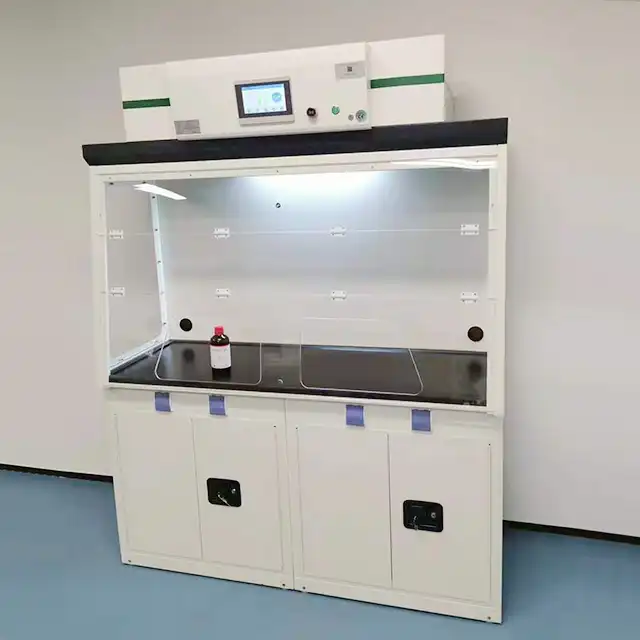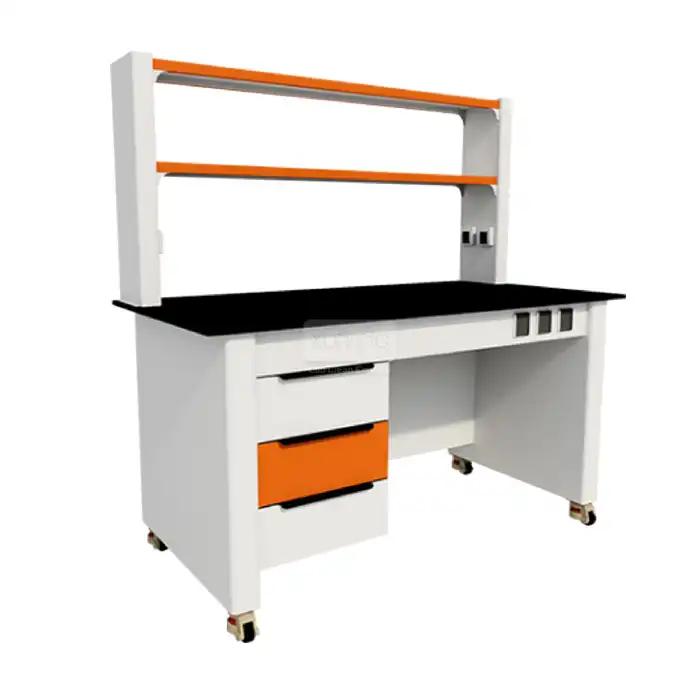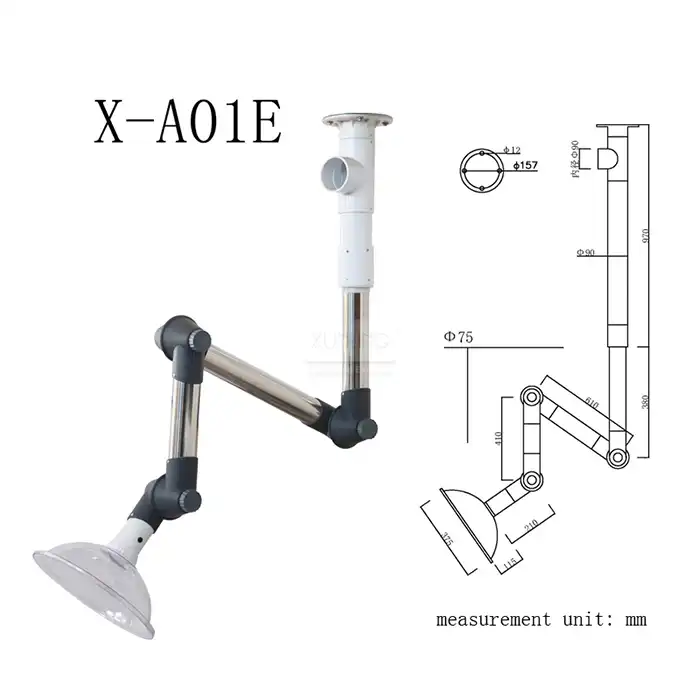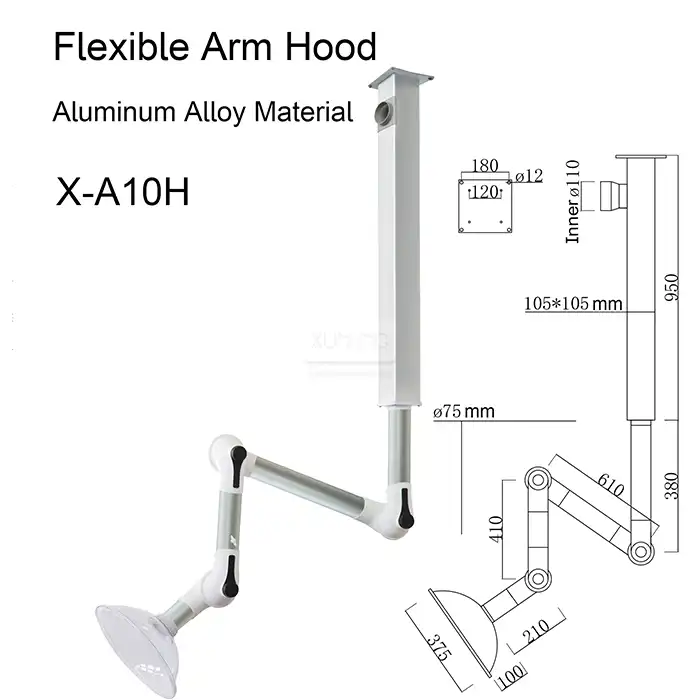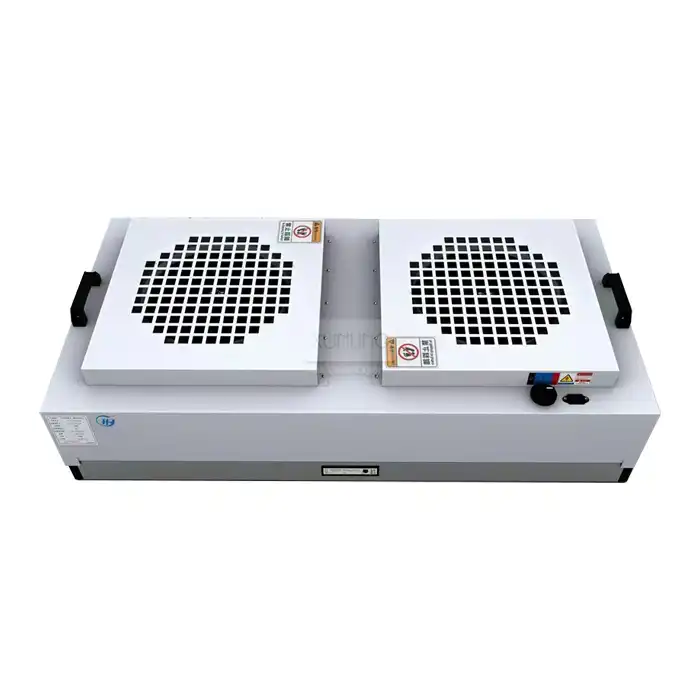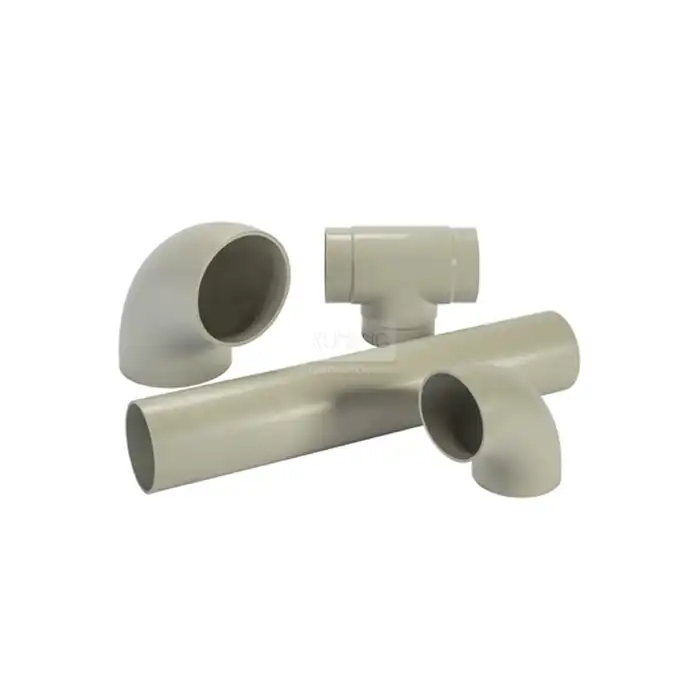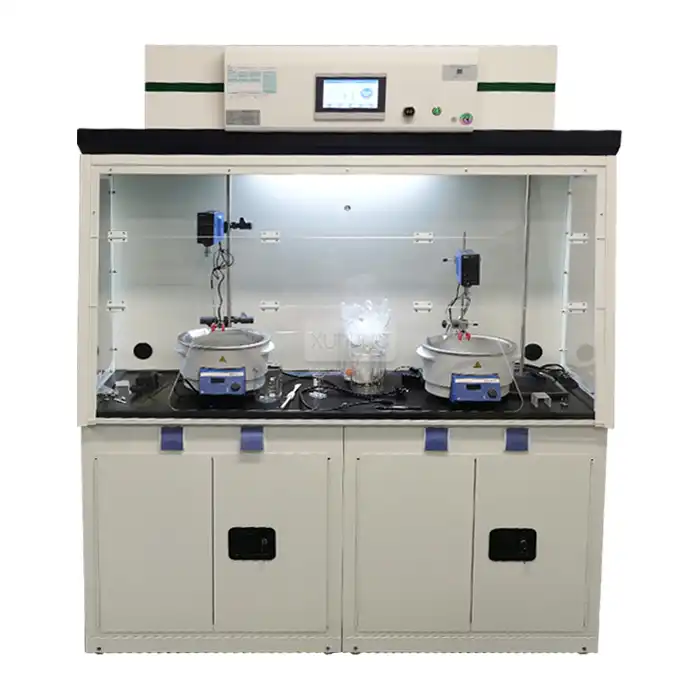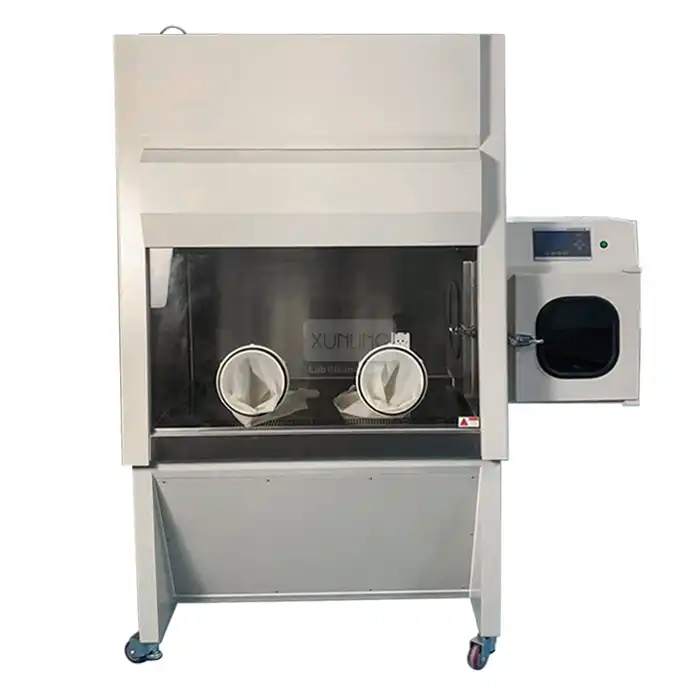
Can Polypropylene Ductwork be Customized for Specific Applications?
2025-04-29 10:59:22
In today's laboratory and industrial environments, efficient ventilation systems are crucial for maintaining safety standards and operational efficiency. One of the most pressing questions for facilities managers and laboratory designers is whether Polypropylene Ductwork can be tailored to meet specific application requirements. The answer is a resounding yes – polypropylene ductwork offers exceptional customization capabilities that make it an ideal solution for diverse laboratory settings. Polypropylene Ductwork can be fully customized to meet the unique demands of various laboratory and industrial applications, offering tailored dimensions, configurations, and features that ensure optimal performance in specialized environments while maintaining its superior corrosion resistance and durability.
Customization Options for Polypropylene Ductwork Systems
When designing laboratory ventilation systems, having flexibility in your ductwork configuration is essential for achieving optimal performance. Polypropylene Ductwork offers numerous customization options that can be tailored to your specific requirements.
Dimensional Customization for Space Optimization
Polypropylene Ductwork can be manufactured in a wide range of dimensions to fit virtually any laboratory layout. While standard offerings include pipe diameters of 100 mm, 150 mm, 200 mm, and 250 mm with a standard length of 3 meters, custom dimensions are readily available to accommodate specific spatial constraints. This flexibility is particularly valuable in laboratories with limited ceiling space or unusual configurations where standard sizes would be impractical.
The customization process begins with a detailed analysis of your space and ventilation requirements. Engineers can adjust not only the diameter and length but also the wall thickness (typically ranging from 3-5 mm) based on pressure requirements and structural needs. For laboratories handling particularly aggressive chemicals requiring enhanced corrosion resistance, thicker-walled polypropylene ducts can be manufactured without compromising the system's lightweight characteristics. This dimensional flexibility ensures that even in the most challenging spatial environments, an efficient ventilation solution can be implemented without extensive facility modifications.
Furthermore, custom fittings such as reducers, expanders, and transitions can be designed to create smooth airflow pathways between different sections of your ventilation system, minimizing pressure drops and optimizing energy efficiency. This level of dimensional customization makes Polypropylene Ductwork an excellent choice for both new laboratory constructions and renovations of existing facilities where working around established infrastructure is necessary.
Specialized Connectors and Junction Customization
The connection points within a ductwork system are often the most vulnerable to leaks and failures, making customized connectors and junctions crucial for maintaining system integrity. Polypropylene Ductwork offers tremendous flexibility in this area, with custom-designed components that eliminate potential weak points in your ventilation system.
Standard Polypropylene Ductwork systems typically feature snap-fit connectors that eliminate the need for welding during installation. However, for applications with special requirements, these connection methods can be customized further. Options include specialized gasket materials for extreme chemical environments, reinforced connection points for high-pressure systems, and quick-release mechanisms for areas requiring frequent maintenance access. These customized connector solutions ensure that the entire ductwork system maintains its corrosion resistance rating and operational efficiency without compromising on ease of installation.
Custom junction configurations are also available for complex ventilation layouts. Multi-branch fittings, variable-angle connectors, and specialized manifolds can be designed to create optimized airflow pathways that meet the exact ventilation requirements of different laboratory zones. For facilities with multiple Fume Hoods or containment areas requiring different extraction rates, custom junction designs ensure balanced airflow throughout the system, preventing backflow and cross-contamination risks. The lightweight nature of Polypropylene Ductwork (significantly lighter than traditional metal ducts) makes even complex custom junction installations manageable without requiring additional structural support, further enhancing the system's adaptability to specialized laboratory environments.
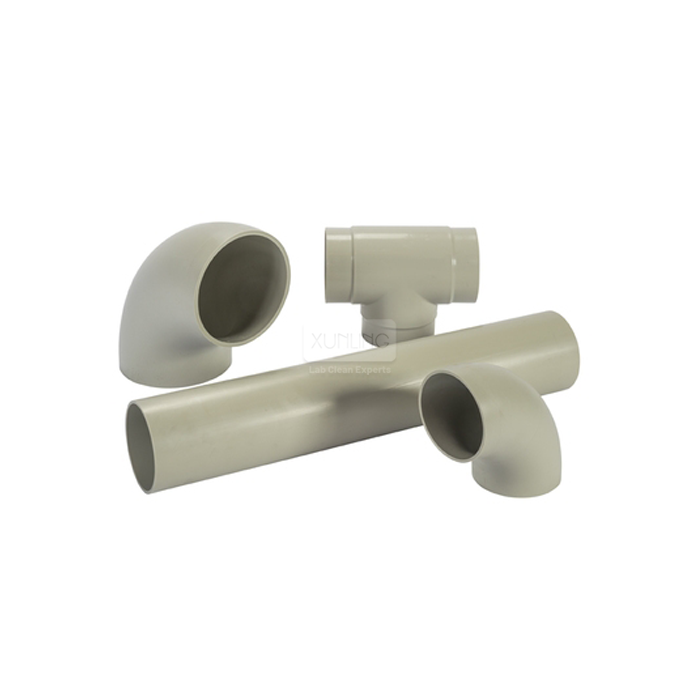
Performance-Enhancing Component Integration
Beyond basic dimensional and connection customizations, Polypropylene Ductwork systems can integrate specialized components that enhance performance for specific applications. These customized elements transform a simple ventilation pathway into a comprehensive system tailored to precise laboratory requirements.
Custom dampers and flow control mechanisms can be incorporated directly into the ductwork design, allowing for precise adjustment of airflow rates at different points in the system. For laboratories with varying ventilation needs throughout the day, or different extraction requirements for different processes, these integrated flow control components eliminate the need for separate equipment installation, saving both space and installation costs. The corrosion-resistant properties of polypropylene ensure these mechanisms maintain their functionality even when exposed to aggressive chemical fumes.
Monitoring ports and sampling access points can also be custom-integrated into the ductwork system. These features are particularly valuable for facilities requiring regular air quality testing or system performance verification. Instead of retrofitting testing ports (which can create potential leak points), custom-designed access points maintain system integrity while providing convenient monitoring capabilities. Other speciality components that can be integrated include condensation management systems for high-humidity applications, noise reduction features for sound-sensitive environments, and specialized baffles to manage particulate deposition within the ducts. With a temperature range of -10°C to 80°C, Polypropylene Ductwork systems can be customized with appropriate insulation or temperature control features for applications approaching these operational limits.
Industry-Specific Customization Applications
Different industries have unique ventilation challenges that require specialized ductwork solutions. Polypropylene Ductwork can be customized to address these specific requirements across various sectors.
Laboratory and Research Facility Adaptations
Research laboratories represent one of the most demanding environments for ventilation systems due to the diversity of chemicals and processes they handle. Customized Polypropylene Ductwork provides tailored solutions for these complex settings.
In chemical analysis laboratories, where multiple fume hoods might be running different tests simultaneously, customized ductwork configurations ensure appropriate extraction rates for varying chemical hazards. The excellent corrosion resistance of polypropylene makes it ideal for these environments, as it can withstand exposure to most acids, alkalis, and solvents commonly used in analytical procedures. Custom manifold systems can be designed to connect multiple fume hoods to a central extraction system while maintaining balanced airflow and preventing cross-contamination between workstations. For laboratories working with particularly aggressive chemicals, specialized polypropylene formulations with enhanced chemical resistance can be utilized in areas of highest exposure.
Biotechnology research facilities present different challenges, often requiring absolute containment of biological materials. In these settings, Polypropylene Ductwork can be customized with enhanced sealing systems at all connection points, creating a virtually leak-proof ventilation pathway. Custom inline HEPA filter housings can be integrated directly into the ductwork, simplifying the filtration system while ensuring all exhaust air is properly treated before release. The smooth interior surface of polypropylene ducts also minimizes the accumulation of biological materials within the system, reducing contamination risks and maintenance requirements. For facilities handling particularly sensitive biological agents, custom ductwork with double-containment features provides an additional safety layer, with the space between primary and secondary ductwork actively monitored for potential breaches.
Pharmaceutical Manufacturing Customizations
Pharmaceutical manufacturing facilities face strict regulatory requirements for their ventilation systems, making customized ductwork solutions particularly valuable in this industry. The GMP (Good Manufacturing Practices) standards often applicable in these environments demand ventilation systems with high reliability, cleanability, and documentation.
Customized Polypropylene Ductwork for pharmaceutical applications can include specialized clean-in-place features that allow for regular sanitization without system disassembly. Custom access panels designed to maintain system integrity while permitting inspection and validation can be strategically positioned throughout the ductwork network. For areas handling active pharmaceutical ingredients (APIs), which may be highly potent or require containment, specialized high-integrity connections with documented leak rates can be implemented. The natural chemical resistance of Polypropylene Ductwork ensures that even aggressive cleaning agents used in pharmaceutical facilities won't degrade the system over time.
Particular attention is given to airflow management in pharmaceutical settings, where pressure cascades between different manufacturing zones are critical for contamination control. Custom ductwork configurations with integrated pressure monitoring ports allow for continuous verification of these important parameters. The lightweight nature of polypropylene makes it easier to support complex ductwork arrangements without extensive ceiling reinforcement, providing greater design flexibility when creating these specialized ventilation zones. For pharmaceutical operations requiring sterile environments, custom Polypropylene Ductwork can be manufactured under controlled conditions and delivered with appropriate certification documentation, supporting the validation requirements of these highly regulated facilities.
Chemical Processing Industry Solutions
The chemical processing industry presents some of the most challenging environments for ventilation systems, with extreme corrosion concerns and potentially explosive atmospheres. Customized Polypropylene Ductwork offers specialized solutions that address these unique safety and durability requirements.
For chemical production facilities handling aggressive corrosives, standard ductwork materials often fail prematurely. Customized Polypropylene Ductwork with enhanced wall thickness (up to 5 mm) and specialized formulations can provide extended service life even in these harsh conditions. The excellent chemical resistance of polypropylene to most acids, bases, and organic solvents makes it an ideal material for these applications. Custom configurations for high-volume extraction systems can be designed with reinforced support structures to handle the increased weight and pressure requirements of large-scale chemical processing operations.
In environments where explosive atmospheres are a concern, specialized antistatic Polypropylene Ductwork formulations can be implemented. These custom materials incorporate conductive elements that prevent the buildup of static electricity, reducing ignition risks in areas handling flammable vapors. The UL 94 HB fire resistance rating provides additional safety assurance in these high-risk environments. Custom explosion relief features can also be integrated into the ductwork design for facilities handling particularly hazardous materials, providing controlled pressure release points in case of internal detonation. The snap-fit connection system typical of Polypropylene Ductwork simplifies installation in these complex environments, reducing construction time and associated risks while working in potentially hazardous areas.
Advanced Manufacturing and Installation Considerations
Successfully implementing customized Polypropylene Ductwork requires careful attention to manufacturing processes and installation techniques to ensure optimal performance.
Custom Manufacturing Processes and Quality Control
The production of customized Polypropylene Ductwork involves specialized manufacturing processes that ensure consistent quality even with non-standard specifications. These advanced production techniques are essential for creating reliable, customized ventilation solutions.
Xi'an Xunling Electronic Technology Co., Ltd. employs state-of-the-art CNC laser cutting machines and CNC bending equipment to achieve precise dimensional accuracy in custom ductwork components. This precision manufacturing approach ensures that even complex custom designs maintain consistent wall thickness and structural integrity throughout the system. For specialized applications requiring enhanced chemical resistance, the company's plastic powder production lines can formulate custom polypropylene blends with specific additives that target resistance to particular chemical families without compromising the material's other beneficial properties. Quality control for custom components involves rigorous testing beyond standard products, with each custom element undergoing dimensional verification, wall thickness measurement, and pressure testing before delivery.
The manufacturing flexibility offered by Xi'an Xunling's extensive production facilities, including 18 CNC laser cutting machines, 50 CNC bending machines, and dedicated PP plate making lines, enables rapid production of custom components without compromising on quality. For particularly unique applications, prototyping services allow for design verification before full-scale production begins. This comprehensive manufacturing approach ensures that customized Polypropylene Ductwork meets or exceeds the performance specifications of standard products while addressing the unique requirements of specialized applications. The company's ISO 9001 certification provides additional assurance that all custom manufacturing processes adhere to rigorous quality management standards, delivering consistent results even for one-off custom projects.
Integration with Existing Infrastructure
One of the most valuable aspects of customized Polypropylene Ductwork is its ability to integrate seamlessly with existing building systems and ventilation infrastructure, making it ideal for laboratory renovations and expansions.
Custom transition pieces can be designed to connect polypropylene sections with existing ductwork made from different materials, creating hybrid systems that leverage the benefits of polypropylene in critical areas while maintaining functional existing infrastructure. These specialized transition components maintain system integrity at material boundaries through custom gaskets and connection methods specifically designed for dissimilar material interfaces. For facilities undergoing phased renovations, this approach allows for gradual system upgrades without complete replacement, reducing both costs and operational disruptions.
Customized support systems can also be developed to accommodate the installation of Polypropylene Ductwork in facilities with limited mounting options or unusual ceiling structures. The lightweight nature of polypropylene (significantly lighter than metal alternatives) reduces structural load requirements, but custom mounting solutions ensure secure installation even in challenging environments. For laboratories with space constraints, custom ductwork configurations can be designed to navigate around existing utilities and structural elements while maintaining appropriate airflow characteristics. The snap-fit assembly method typical of Polypropylene Ductwork simplifies these complex installations, as it eliminates the need for on-site welding or specialized connection tools, allowing for efficient installation even in tight spaces with limited access.
Long-term Performance Optimization
Customization of Polypropylene Ductwork extends beyond initial design and installation to include features that optimize performance throughout the system's operational life, ensuring long-term reliability and efficiency.
Custom access points and maintenance features can be integrated into the ductwork design, allowing for periodic inspection and cleaning without major system disassembly. These thoughtfully positioned access panels maintain system integrity while providing convenient entry points for maintenance personnel, reducing downtime during scheduled maintenance activities. For systems handling particulate-generating processes, custom-designed clean-out ports can be positioned at strategic locations to facilitate regular removal of accumulated materials before they impact system performance. The natural smooth interior surface of Polypropylene Ductwork already minimizes particulate accumulation, but these additional maintenance features further extend system longevity in demanding applications.
Modular design approaches can be implemented in custom ductwork systems to facilitate future modifications or expansions. By incorporating standardized connection interfaces at strategic points, the system can be reconfigured or extended as laboratory needs evolve without requiring complete replacement. This forward-thinking approach to customization provides valuable flexibility for facilities with changing operational requirements. Custom monitoring features can also be integrated into the ductwork system, allowing for continuous assessment of airflow rates, pressure differentials, and even chemical exposure levels in critical areas. These monitoring capabilities provide early warning of potential performance issues, enabling proactive maintenance before failures occur and extending the effective service life of the entire ventilation system.
Conclusion
Polypropylene Ductwork offers exceptional customization potential for laboratory and industrial ventilation systems, making it the ideal solution for facilities with specialized requirements. From dimensional adaptations to industry-specific features, the versatility of polypropylene creates opportunities for truly optimized ventilation solutions that enhance safety, efficiency, and durability in demanding environments.
Ready to explore custom Polypropylene Ductwork solutions for your facility? Xi'an Xunling Electronic Technology Co., Ltd. offers comprehensive customization services with 5-day delivery, 5-year warranty, and one-stop service from design to installation. Our OEM support, fast delivery, and quality assurance make us the preferred partner for laboratories worldwide. Contact our experienced team today to discuss your specific requirements and discover how our customized solutions can transform your laboratory ventilation systems. Reach us at xalabfurniture@163.com to begin your journey toward optimized laboratory performance.
References
1.Johnson, R.T., & Williams, S.M. (2023). Advances in Polypropylene Applications for Laboratory Environments. Journal of Laboratory Design and Engineering, 45(3), 128-142.
2.Chen, H., & Zhao, L. (2022). Comparative Analysis of Ductwork Materials in Corrosive Laboratory Environments. International Journal of Ventilation Science, 18(2), 89-103.
3.Smith, A.J., Brown, T.D., & Jones, P.K. (2023). Customization Approaches for Laboratory Ventilation Systems. Laboratory Safety Quarterly, 29(4), 211-225.
4.Rodriguez, M.L., & Patel, S.V. (2024). Polypropylene Applications in Pharmaceutical Manufacturing: A Case Study Approach. Journal of GMP Compliance, 37(1), 56-72.
5.Wilson, E.H., & Thompson, C.R. (2022). Integration Strategies for Laboratory Ventilation Upgrades. Building Systems Engineering, 14(3), 178-193.
6.Li, X., Wang, Y., & Zhang, Q. (2023). Advanced Materials in Laboratory Exhaust Systems: Efficiency and Safety Considerations. Chemical Engineering Technology, 27(2), 112-129.
YOU MAY LIKE







